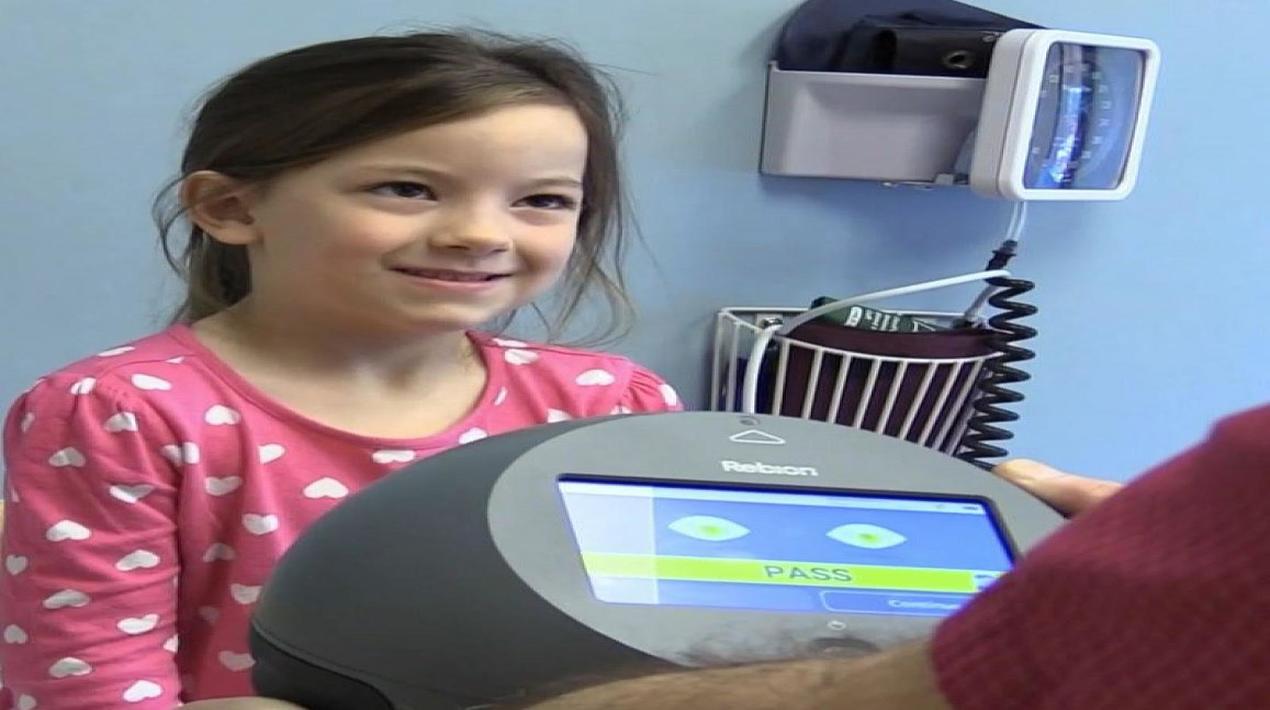
National Institutes of Health (NIH) is the primary federal agency conducting and supporting basic, clinical, and translational medical research, and is investigating the causes, treatments, and cures for both common and rare diseases.
Recently, an NIH-funded study showed a handheld screening device that detects subtle misalignment of the eyes accurately identifies children with amblyopia (lazy eye). Amblyopia is an impaired vision in one eye and it is the leading cause of preventable monocular (single eye) vision loss, affecting three of every 100 children in the U.S.
The findings suggest that paediatricians and other primary care providers could use the device to catch amblyopia at an early age when it is easier to treat.
– Michael F. Chiang, M.D., Director of the National Eye Institute (NEI)
The screening device works by assessing the eyes’ ability to fixate together. Held 14 inches from the eyes, the child fixates on a smiley face while the device simultaneously scans both retinas. The scan involves a polarized laser that probes nerve fibres in an area of the light-sensing retina called the fovea, which is important for central vision.
Even a subtle misalignment of the foveas — called small-angle strabismus — can interfere with the brain’s ability to integrate images from both eyes. The device calculates a binocularity score that indicates whether the child requires referral to an eye health physician for further investigation.
Two non-ophthalmic research associates who were trained how to use the device screened each child, and the results were compared against those from an eye examination performed by a pediatric ophthalmologist who was unaware of the device’s results.
The device detected all six cases (100% sensitivity) of amblyopia and/or strabismus that had been confirmed by a professional eye examination. The device also flagged an additional 45 children as possibly having amblyopia and/or strabismus who were later determined by the eye examination to be normal (85% specificity).
In the hands of a trained user, it takes 28 seconds to sit the child down, perform the test, and record the results – provided that the child cooperates — which is an important consideration for its adoption in busy pediatric care settings. The test itself requires just 2.5 seconds of a child’s attention.
A key limitation of the study was that the device was not compared with currently available photo-screening devices. Such devices detect differences in light reflexes in each eye and produce images that can help detect risk factors for amblyopia, but not amblyopia itself, which can result in both over and under detection of amblyopia. By contrast, the pediatric vision scanner detects the presence of amblyopia as opposed to the risk factors of amblyopia, which may lead to fewer unnecessary referrals to pediatric ophthalmologists.
According to another study funded by NIH, a mobile app can distinguish toddlers with autism spectrum disorder (ASD) from typically developing toddlers based on their eye movements, as reported by OpenGov Asia. They observe the toddlers while they are watching videos during their pediatric visit. This is because toddlers with ASD have distinctive eye-gaze patterns and reduced attention to social stimuli. They can also barely coordinate gaze with speech sounds.
The study found that the app deployed on an iPhone or iPad reliably measures both known and new gaze biomarkers that distinguished toddlers with ASD vs typical development. This method may have the potential for developing scalable autism screening tools. It can possibly apply to a natural environment and enable data sets compliant to machine learning.
In the future, the mobile app can screen infants and toddlers with ASD and refer them for early intervention when chances for treatment success are greatest. However, equipment used for visual tracking is expensive and requires specially trained personnel, limiting its use outside of laboratory settings.
















